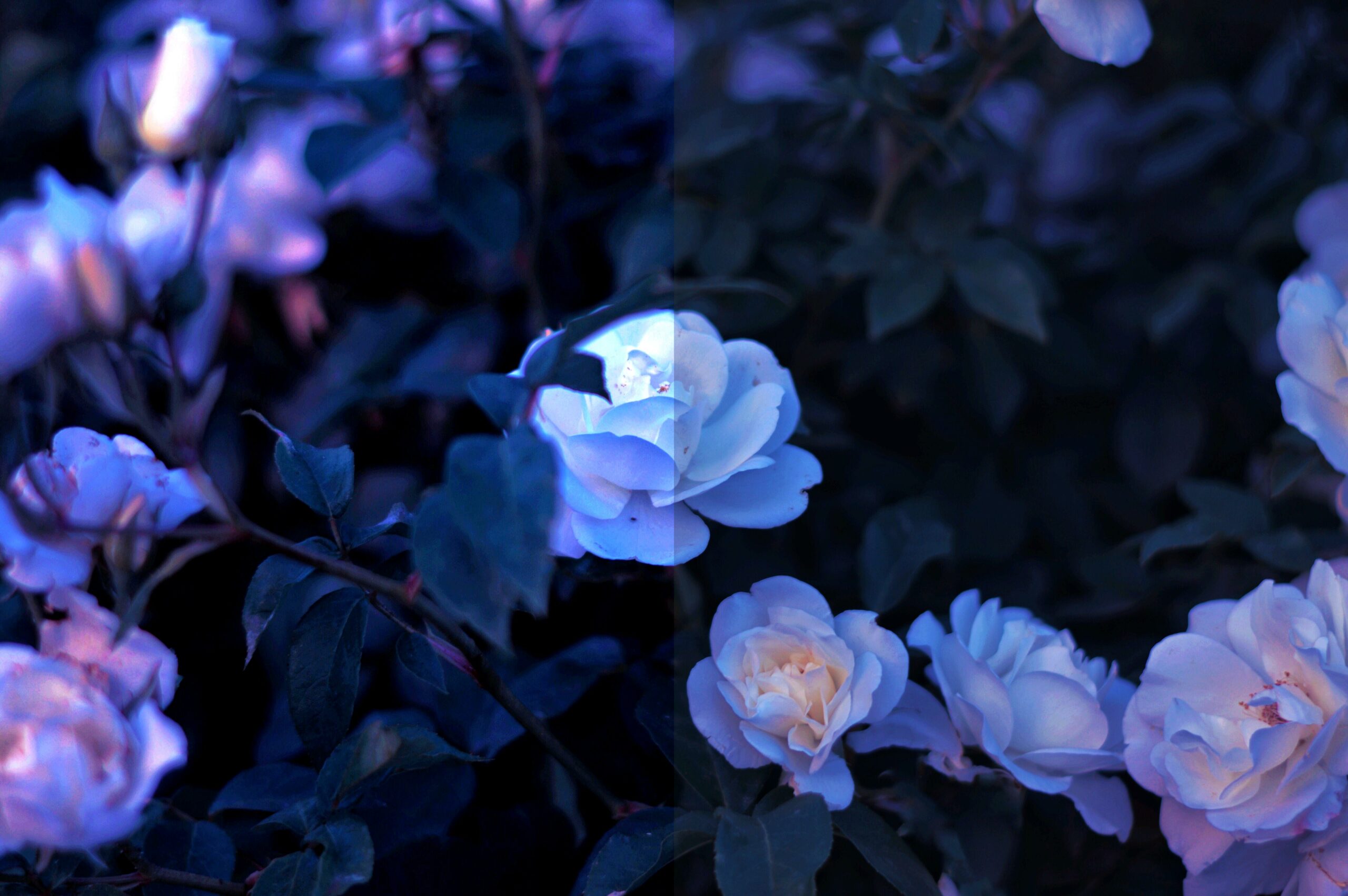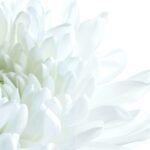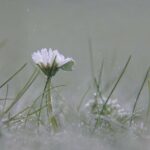Are you ready to immerse yourself in the enchanting world of blooming love? Prepare to be captivated as we embark on a journey deep into the heart of horticulture and explore the romantic facts about flowers. In this article, we will unveil the hidden stories and symbolism behind these breathtaking blooms, delving into their historical significance and the poetic language they speak. Get ready to be transported into a realm where the beauty of flowers intertwines with tales of love, adoration, and heartfelt connections. So, get ready to indulge your senses and prepare to unravel the secrets of nature’s most captivating creations.
Romantic Facts About Flowers
Are you ready to embark on a journey into the enchanting world of flowers and discover their romantic secrets? Get ready to delve deep into the realm of romance, where the language of flowers speaks volumes and love blossoms in the most beautiful ways.
In the Victorian era, when words and gestures weren’t always enough to express emotions, people turned to flowers as a means of communication. This tradition, known as the “language of flowers,” became a popular way to convey heartfelt messages. It’s a practice that continues to this day, as many couples still use flowers to express their love and affection.
Imagine walking into a room filled with romantic blooms, their colors, shapes, and combinations creating an atmosphere that exudes love. Add some candles to enhance the ambiance, and you have the perfect setting for a romantic evening. The combination of flowers and candles has long been associated with romance, bringing warmth and intimacy to any space.
Now, let’s talk about the queen of all romantic flowers—the red rose. Symbolizing love and passion, the red rose has been the go-to choice for expressing deep affection for centuries. But did you know that different shades of red roses carry different symbolic meanings? A bright red rose signifies passionate love, while a deeper shade of red represents enduring love. So, the next time you want to convey your feelings to that special someone, let the language of flowers guide you.
Beyond the red rose, there are many other flowers that hold a special place in the realm of romance. Garden roses, with their lush petals and intoxicating fragrance, are a classic choice for romantic gestures. Peonies, with their soft and delicate blooms, symbolize a happy and prosperous marriage. Carnations, often used in bouquets and floral arrangements, represent pure and enduring love. And orchids, with their exotic beauty, symbolize love, luxury, and strength.
Flowers have not only played a significant role in expressing love but have also been deeply rooted in folklore, mythology, and literature as symbols of affection. From ancient Greek myths to Shakespearean plays, flowers have captured the imagination of writers and lovers alike. They have become a timeless symbol of love and have the power to evoke emotions that transcend time and place.
As we conclude our journey into the romantic facts about flowers, let’s take a moment to appreciate the poetic language spoken by blooms. Through their colors, scents, and symbolism, flowers convey emotions that words alone cannot express. So, the next time you find yourself in awe of a beautiful bouquet or captivated by a single stem, remember the deep connections between flowers and love.
“In the language of flowers, words are unnecessary as love speaks through petals and fragrances.”
Flowers have always fascinated mankind with their vibrant colors, delicate petals, and intoxicating scents. If you’re like me and can’t get enough of these natural treasures, you’ll be delighted to explore some captivating facts about flowers. From the fascinating language of flowers to the incredible ways they attract pollinators, there’s so much to discover. So, if you’re ready to dive into the enchanting world of blooms, click here for some intriguing facts about flowers: facts about flowers. Get ready to be amazed!
The flowers we see in the world are incredibly diverse, with around 390,900 known species of plants and likely many more yet to be discovered. They come in all shapes, colors, and sizes, ranging from micro-organisms to the largest living entities on Earth. Each plant species is unique in its own way, but some have evolved extraordinary characteristics to thrive in their natural environments. In this article, we will explore the top 15 most unique flowers known to science.
[youtube v=”UMfMtaxxkAI”]
Number 15: Flame Lily
Native to tropical regions of Africa and Asia, but now commonly cultivated in Australia and the Pacific, the flame lily, scientifically known as Gloriosa, is a group of twelve different plant species that share a stunning appearance. These deciduous perennial flowers have adapted to an extremely wet summer season followed by a long period of dry weather. Growing up to 10 feet tall, their tendrils on the end of their leaves allow them to climb over or push other competing plants out of their way to reach the best spot for sunlight. The flame lily’s colorful leaves, which curve back in on themselves, have made it a popular decorative flower. It is considered the official flower of Zimbabwe, the Tamil Nadu state of India, and the state of Ilam in Sri Lanka. However, it is important to note that every part of the plant contains high levels of colchicine, which can be deadly in high doses. There have been cases where people deliberately consumed enough of these flowers to commit suicide.
Number 14: Titan Arum
The titan arum, also known as the corpse flower, holds the record for developing the largest unbranched inflorescence of any known plant species on Earth. Native to the regions across western Sumatra where it grows in gaps in the rainforest, these enormous flowers can grow up to 10 feet tall, with leaves reaching up to 20 feet tall and 16 feet across. The bulb, which functions similarly to a bulb, is one of the largest known, weighing as much as 339 pounds. This bulb stores all the energy the plant needs to flower when the conditions are right. The titan arum exists in two forms: leaf and flower. When in leaf, a single giant leaf grows to collect the energy and nutrition it needs. Once enough energy is collected, the plant becomes dormant for several months and then begins to grow the flower. The emergence of a titan arum is a highly popular event at botanical gardens, as it emits an odor that resembles the smell of death and rotten meat to attract scavenging creatures for pollination.
Number 13: Tropical Sundew
The tropical sundew, scientifically known as Drosera biremini, is a plant native to a wide tropical region across Africa, China, Asia, and surrounding areas. Growing small wedge-shaped leaves and white flowers that develop in clusters several inches across, each individual plant only grows to less than an inch in size. However, what makes this flower unique is its carnivorous nature. Like all types of sundews, it captures insects as a food source. The tropical sundew is particularly special because it is one of the fastest-acting carnivorous plants. Its leaves wrap around an insect within seconds of contact, and the plant secretes liquids that dissolve the insect’s body, allowing for nutrient absorption. Despite its danger to insects, the tropical sundew is beneficial to humans and is used in the production of topical skin creams and other medicines due to the chemicals present in its flower structures that increase blood flow.
Number 12: Bee Orchid
While insects commonly imitate plant leaves or tree branches for protection, some flowers imitate insects as a means of attracting pollinators. The bee orchid, native to Europe, North America, and the Middle East, is one such example. Growing to a maximum height of around 20 inches and blooming late in spring and early summer, the bee orchid has a unique appearance that resembles the abdomen of a female bee. This specific structure attracts male bees, which unknowingly transfer pollen as they try to mate with the flower. The bee orchid’s appearance also deters larger animals from eating it, as they want to avoid the risk of being stung by a bee. This clever adaptation increases the orchids’ chances of survival and reproduction.
Number 11: Jade Vine
Flowers come in countless shades, but one of the most unique colorations is seen in the jade vine. This woody vine species grows naturally in the forests of the Philippines, with stems reaching up to 60 feet long. The jade vine develops clusters of turquoise-colored cloche flowers, resembling precious stones like turquoise and jade. These flower growths can form clumps up to 10 feet long and contain large seed pods with 12 seeds each. The jade vine’s unusual flower shape is a result of its reliance on bats for pollination. Bats hang upside down on the plant to drink its nectar, resulting in their bellies getting covered in the jade vine’s blossom. Additionally, a specific species of wasp feeds almost exclusively on the plant, and the shape of its leaves has led to the evolution of a butterfly species that makes its home within the jade vine flowers.
Number 10: Lithops
Lithops, commonly known as ice plants, deviate from the typical appearance of plants. Found across southern Africa, these plants have fused leaves that curl over one another, giving them the appearance of rocks. They often have cream, gray, or brown shades to further deceive hungry animals. However, a small slit between the leaves allows a colorful flower to emerge when ready. This flower attracts insects and other animals for pollination. Lithops tend to lay dormant during extremely hot weather and do most of their growing during the cooler months, as they don’t have many leaves to cool themselves down through transpiration. Due to their unique appearance and sweet scent during flowering, lithops have become popular houseplants, requiring regular watering and protection from extreme cold.
Number 9: Sturt’s Desert Pea
Sturt’s Desert Pea is a unique-looking flower native to Australia. Despite being closely related to other bean and pea species, it has developed a distinct appearance that initially confused botanists. The natural form of the flower consists of white leaf-like flowers that can grow up to three or four inches long. However, hybridized varieties can exhibit deep blood red, pink, or pale cream colors. The centerpiece of the flower is a large black bulbous structure, which is actually part of the flower itself. This deceptive feature encourages animals to visit the plant, helping with pollination. Eventually, Sturt’s Desert Pea produces fruit resembling a stretched pea, containing up to 50 kidney-shaped seeds. It is considered a symbol of South Australia and has been featured on Australian postage stamps.
Number 8: Strelitzia
Also known as the bird of paradise flower, Strelitzia is indigenous to South Africa. The plant grows up to six and a half feet tall, with large leaves reaching up to 30 inches long. The flowers emerge from the top of the stalk, resembling a bird’s beak. This hardened leaf, called the spathe, not only looks like a bird’s beak but also serves as a landing spot for sunbirds, the main pollinators of the plant. The flowers, composed of three orange sepals and three blue or white fused petals, provide nectar for the birds. As the birds drink the nectar, the petals open further, depositing pollen on the bird’s feet. When the bird moves on to the next Strelitzia flower, it transfers the pollen, aiding in pollination. Strelitzia is a popular ornamental plant worldwide, thriving in warm, sunny climates.
Number 7: Lobster Claw
Heliconia comprises 194 known species, primarily native to tropical regions in the Americas. Often referred to as lobster claw plants or toucan beaks, these plants share a unique common attribute—they all have strange-shaped flowers. Depending on the species, the plants can reach heights of one and a half to fifteen feet, with large, wide green leaves growing up to ten feet long. The stems produce flowers composed of brightly colored waxy structures resembling lobster claws. The true flowers, small and hidden within the “claws,” are difficult to reach. Heliconias rely on hummingbirds for pollination, as the birds’ long beaks and ability to hover allow them to access the nectar and pollen. Different heliconia species flower at different times, ensuring that they do not compete for the same hummingbirds.
Number 6: Torch Ginger
The torch ginger, officially known as Etlingera elatior, originated in Southeast Asia. This species boasts over a hundred closely related species. The torch ginger plant grows tall, with brightly colored flowers that resemble torches. These flowers emerge from large stems within clusters of green leaves that can reach impressive lengths. The unique flower shape and vibrant colors make it an attractive ornamental plant. Torch ginger relies on specific animals with long beaks to access its nectar and aid in pollination. Different species of torch ginger flower at various times of the year, ensuring that they don’t compete for the same pollinators.
These fifteen unique flowers represent just a handful of the incredible diversity found in the plant kingdom. From their fascinating adaptations to their stunning appearances, these flowers are a testament to the wonders of nature. Next time you encounter a flower, take a moment to appreciate its beauty and consider the remarkable stories hidden within its petals.
FAQ
How were flowers used to express emotions in the Victorian era?
In the Victorian era, flowers were used to express emotions when words and gestures failed. Different flowers had specific meanings, allowing individuals to convey their feelings through the gift of flowers.
What is the significance of the “language” of flowers?
The “language” of flowers dates back to the Victorian era and is a symbolic way of communicating emotions. Each flower has a unique meaning, allowing individuals to convey specific messages or sentiments through the gift of a particular flower.
Which flowers are commonly associated with romance?
Flowers such as garden roses, peonies, carnations, and orchids are commonly associated with romance. Their delicate beauty, enticing fragrances, and vibrant colors make them ideal choices for expressing love and affection.
What is the most romantic flower?
The red rose is considered the most romantic flower. Its deep red color symbolizes passionate love and has been associated with romance for centuries.
What symbolic meanings do different shades of red roses carry?
Different shades of red roses carry different symbolic meanings. A deep red rose represents passionate love, while a lighter shade of red signifies admiration and appreciation.
- Unveiling the Enigma: Mansoureh Khojasteh Bagherzadeh’s Public Appearances & Private Life in Iran - July 18, 2025
- Unveiling the Mystery: Mansoureh Khojasteh Bagherzadeh’s Husband: A Rare Glimpse into a Private Life - July 18, 2025
- Unveiling Masoud Khamenei’s Mother: Power, Influence, and Iran’s Future - July 18, 2025
















